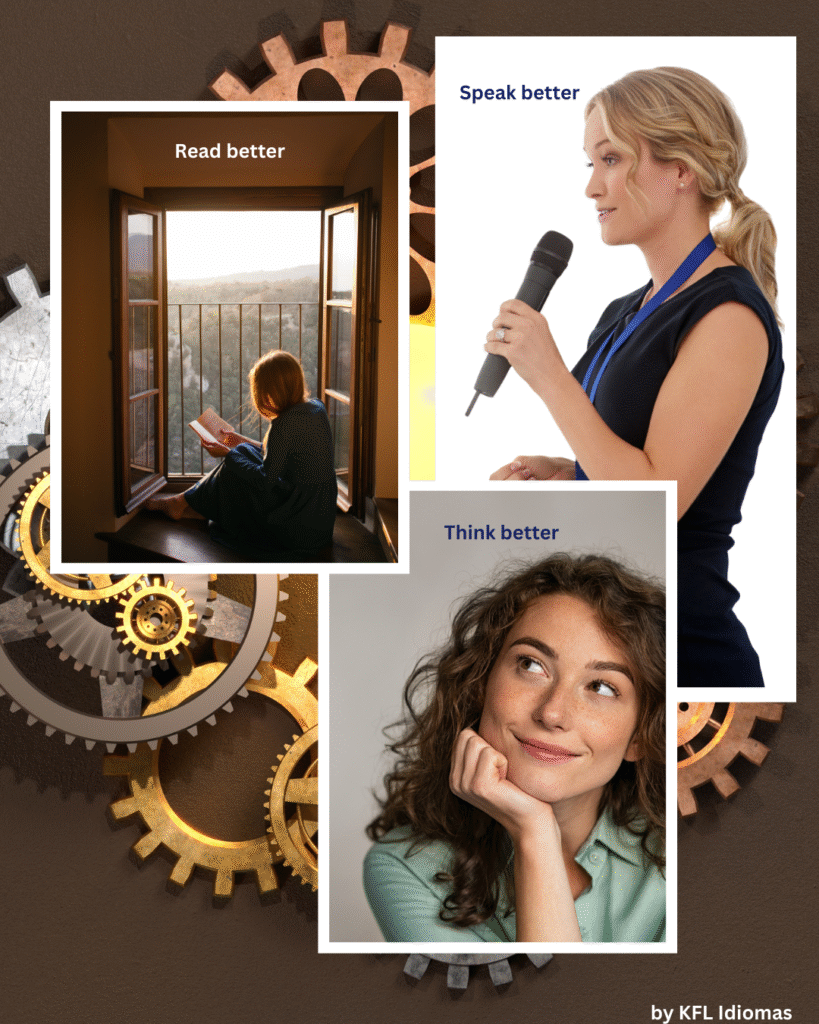Stronger reading habits mean stronger arguments, clearer speech, and smarter decisions.

Why Reading Still Matters in a Fast-Paced World
Reading is a crucial skill in our fast-paced world. Yet, with the speed at which technology has been dictating our everyday lives, many people seem to have lost interest in reading and now resort to skimming texts instead of engaging with them. This shift in reading habits has led to a decline in true comprehension — from overlooking answers that are clearly stated to struggling with inferences and implied meanings.
The Consequences of Skimming Instead of Reading
This weakening of comprehension doesn’t just affect learning — it affects how we process reality. Neuroscientist Maryanne Wolf (2018) warns that our habit of skimming digital texts is reshaping the brain’s ability to deal with complexity. Without the focus and immersion that deep reading allows, we risk losing the cognitive depth needed for real understanding.
What doesn’t seem to have been (fully) considered is that the poorer our ability to comprehend what is being said, the more easily manipulated we may become. While understanding what is being said is already a challenge, understanding why it’s being said — and how it’s being framed — is what truly transforms readers into thinkers.
How Did We Get Here?
Part of the problem may lie in the overload of information we get bombarded with daily. In order to develop a coping strategy, we started skimming to keep up with our new pace of life, incessant information, and news. By doing that, however, we have jeopardized our attention span and our reading stamina, notably among heavy social media users.
How to Build Better Reading Habits
Reversing this loop isn’t easy — but getting back into healthy reading habits is doable.
- Start slowly: give yourself short reading sessions to build stamina.
- Don’t multitask: place your phone face down and silence notifications.
- Engage with the text: highlight ideas, underline examples, and take notes.
- Stay curious: look up unfamiliar words and ask questions in the margins.
Deep reading develops empathy, helps us understand different perspectives, and allows us to recognize nuance. It also strengthens our ability to argue, speak, and write with confidence and criticality. The choice to read deeply is also the choice to think better, speak better, and make decisions more consciously.
3 Practical Strategies for Learners
Most learners ask: “How do I actually do this?” Here are three strategies you can try today:
- The 10-minute focus: choose an article or a book chapter; set a timer for 10 minutes on your phone and place it screen down so you don’t get distracted.
- Margin questions: while reading, ask what? why? how? what if? (Need more help? Check out our margin questions guide.)
- Summarize aloud: after finishing, explain the main point to yourself using your phone’s voice recorder or to a friend in English.
What to Read: Resources for Intermediate and Advanced Learners
For Intermediate Learners (B1–B2)
Articles (500–700 words) from sites like:
- Linguohack
- News report
- VOA Learning English
- Gutenberg Project – if you prefer books
For Advanced Learners (C1–C2)
- Longer, unabridged texts, opinion pieces, or feature articles from:
Reading as a Tool for Language Growth
Another crucial attitude learners must adopt is to tie reading to language growth. To make your English sound more natural, pay attention to:
- Vocabulary: highlight 3–4 new words or expressions; check pronunciation, examples, and create your own sentences.
- Collocations: notice which words go together (e.g., make a decision, sharpen thinking).
- Connotations: for advanced learners, check whether a word has neutral, positive, or negative meaning (e.g., deal vs. cope; notorious vs. famous).
- Discourse markers: identify how writers frame arguments (e.g., however, on the other hand, what’s more).
Now It’s Your Turn
For Intermediate Learners (B1–B2):
- Choose a short, clear article (400–600 words).
- Read it twice — first quickly, then carefully.
- Write down 2–3 new words/phrases and use them in your own sentences.
- Ask yourself: What’s the main idea? What detail supports it?
- Tell a friend (or record yourself) explaining the article in simple English.
For Advanced Learners (C1–C2):
- Pick a complex opinion piece or feature article.
- Read it once without stopping, then reread to notice tone, nuance, and argument structure.
- Note one sophisticated word or idiomatic expression and explore its connotations.
- Ask: Why did the author frame the issue this way? What perspective might be missing?
- Summarize in your own words, then write or say a counter-argument.
